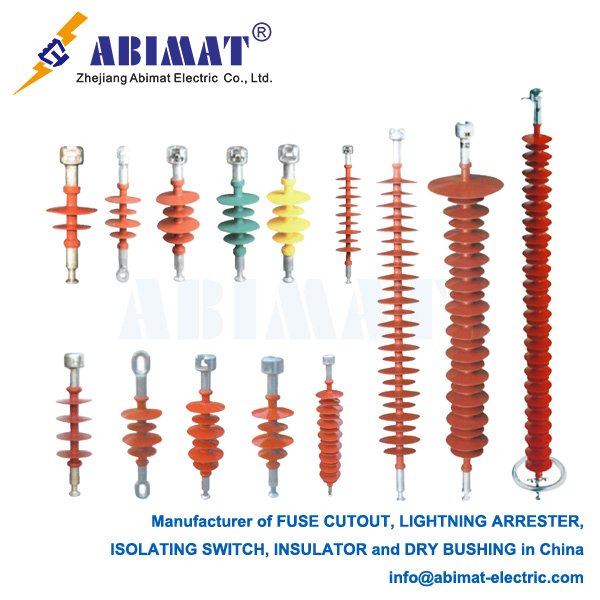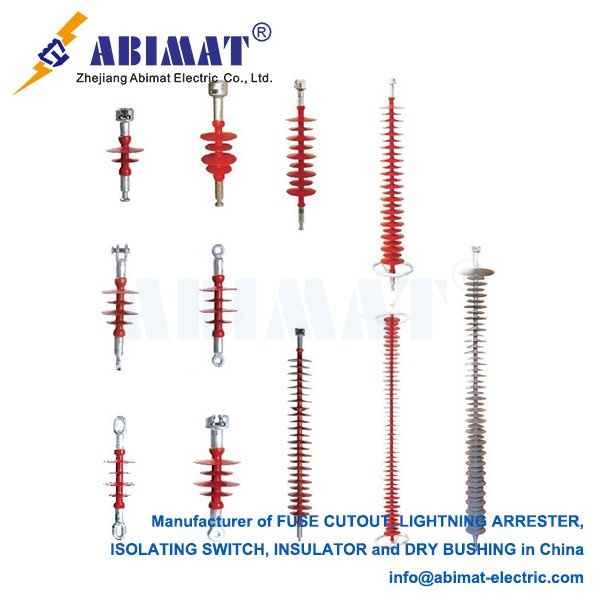Composite Insulators: Advancements in Electrical Insulation Technology
Composite insulators, formally designated as polymer or non-ceramic insulators (NCIs), constitute a critical innovation in high-voltage insulation for power transmission and distribution systems. Their superior performance in challenging environmental conditions has led to widespread adoption as replacements for conventional porcelain and glass insulators.

Structural Composition and Materials
A composite insulator integrates three essential components:
I. Load-Bearing Core: A fiber-reinforced polymer (FRP) rod, typically epoxy resin reinforced with E-glass or R-glass fibers. This core provides high tensile strength (typically 600-1200 MPa) and serves as the primary dielectric barrier.
II. Polymeric Housing (Weathersheds): Molded silicone rubber (commonly High-Temperature Vulcanized HTV or Liquid Silicone Rubber LSR) encapsulating the core. Key material properties include:
Inherent Hydrophobicity: Prevents continuous water film formation on the surface, maintaining insulation integrity under wet contamination. Exhibits hydrophobic recovery and transfer capabilities.
High Tracking and Erosion Resistance: Withstands surface discharge degradation per IEC 60587 standards.
Environmental Stability: Resists UV radiation, ozone, and temperature extremes (-50°C to +150°C).
III. Metal End Fittings: Forged steel, aluminum alloy, or ductile iron terminals crimped or adhesively bonded to the FRP core. Critical seal designs (e.g., triple-seal systems) prevent moisture ingress at the core-end fitting interface.
Performance Advantages Over Traditional Insulators
Exceptional Contamination Performance: Hydrophobicity significantly reduces leakage currents and flashover risk in polluted, coastal, or industrial environments, enabling shorter creepage distances and reduced maintenance frequency.
High Specific Strength: FRP cores achieve tensile strengths exceeding 1000 MPa at 20-30% the weight of equivalent porcelain units, reducing structural loads on support structures.
Damage Resistance: Resilient polymer housing resists vandalism (e.g., gunshot impact) and mechanical shock without catastrophic failure.
Seismic Resilience: Lower mass and inherent flexibility enhance performance in earthquake-prone regions.
Lifecycle Efficiency: Reduced cleaning requirements and elimination of zero-value testing lower operational expenditures.
Primary Applications
High-Voltage Transmission Lines: Standard for AC (HV/EHV/UHV) and HVDC systems, particularly in contaminated zones, heavy icing regions, and areas with seismic risk. Enables compact line design.
Medium-Voltage Distribution Networks: Dominant solution for pole-mounted applications.
Substations: Bus supports, circuit breaker interrupters, and cable terminations where space or pollution constraints exist.
Specialized Installations: Railway electrification (25kV AC) and converter stations.
Critical Considerations
Long-Term Aging: Performance under combined electrical, mechanical, and environmental stress requires ongoing evaluation per IEC 62217 and IEC 61109 standards. Core brittle fracture and sheath erosion are key failure modes under study.
Manufacturing Quality: Strict process control is essential for FRP core integrity, silicone rubber formulation consistency, and hermetic end-seal performance.
Condition Monitoring: Combines visual inspection (for cracks, chalking, brittle core exposure) with diagnostic methods: hydrophobicity classification (STRI Guide 92/1), infrared thermography, and UV corona detection.
Conclusion
Abimat Composite insulators, engineered from FRP cores and silicone rubber housings, deliver unmatched technical advantages for modern power networks. Their contamination resistance, high mechanical strength-to-weight ratio, and reduced maintenance requirements provide tangible operational benefits. Continuous material development and adherence to stringent manufacturing protocols ensure their critical role in enhancing grid reliability. As power systems expand into extreme environments, composite insulator technology remains fundamental to transmission efficiency and resilience.


